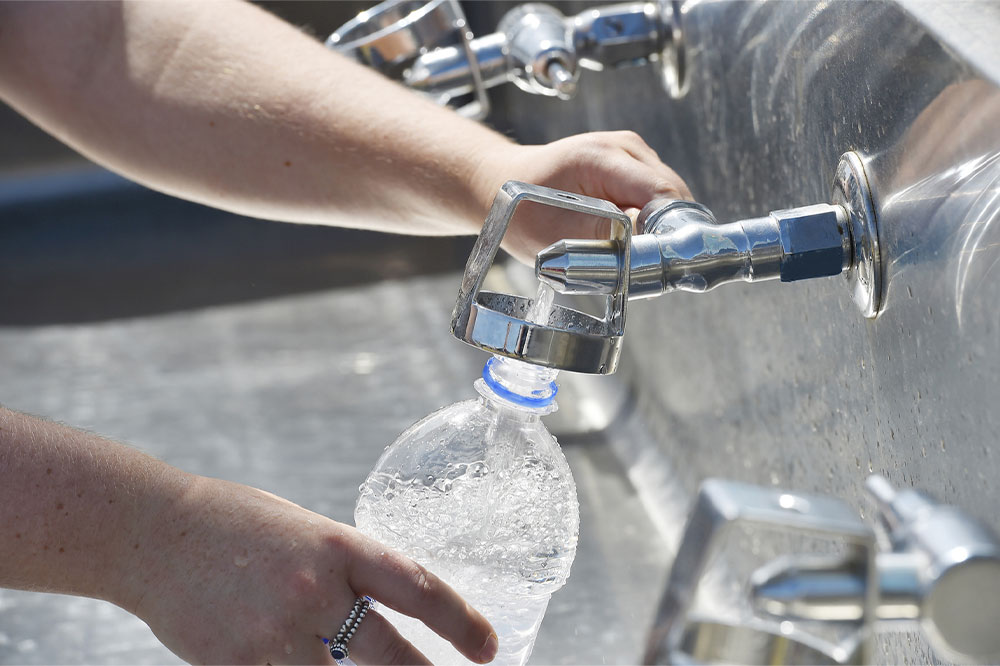Bottled water vs. tap water – which is better?
Every resident of the country consumes approximately 30 gallons of bottled water. Coincidentally, the US government is involved in the regulation of both bottled and tap water. While the former is overseen by the Food and Drug Administration (FDA), the latter is governed by the standards of the Environmental Protection Agency (EPA).
The purpose is to ensure that the drinking water we consume is chemical-free. Understanding the key difference between the two can help save expenses and the health of the family.
Bottled Water vs. Tap Water – Which is Better?
Tap Water
Nearly 92 percent of tap water that originates from lakes, rivers, reservoirs, deep wells, or any other portion of the municipal water system, according to the EPA, is safe to drink.

However, there have been instances where in certain places, local tap water has been discovered to be contaminated and dangerous to drink. For example, Pittsburg residents were advised to boil their water before drinking it in 2017 because the water had a parasite that could cause diarrhea.
What is good and bad in tap water?
Good
Both bottled and tap water essentially have the same taste. However, the age and kind of the water pipe system affect how the tap water tastes.
Tap water is relatively cheaper – you simply need to refill a reusable bottle and consume the same day after day. In hotels and restaurants as well, tap water is free of cost.
Tap water has a significantly smaller total environmental impact than bottled water. Chemicals are used to treat the water before distributing it to homes and offices, so there is some level of influence. After drinking water, you should also wash the glass, cup, or bottle. However, these effects are considerably reduced due to the absence of plastic containers in this scenario.
EPA has quite a few stringent rules regulating tap water. As a result, municipal water in the US is considered to be one of the safest in the world.
Bad
Tap water may contain chlorine and some fluorides.
Bottled water
As mentioned, the FDA regulates the requirements for the processing and packaging of bottled water. The source of water is natural springs, artesian well water, mineral water, well water, as well as municipal water systems. This kind of water goes through an extensive purification system and is then packaged to be sold through retail stores.
What is good and bad?
Good
Packaged drinking water does not contain chlorine; in most cases, it does not include any fluorides either.
It is treated with specific flavors and minerals, which gives it a distinctive and special taste.
Packaged water is a practical option when traveling or spending time outdoors because it is typically accessible in all locations like supermarkets and other stores.
Bad
Bottled water is about 1000 times more expensive than tap water. For example, while 1 gallon of tap water in the US costs about $0.05, a packaged bottle of water costs about $9.47.
FDA rules are comparatively less stringent than the EPA’s for regulating packaged water.
FDA regulations govern quality control, sampling and testing, purification processes, bottling, storage, and transport processes. However, the packaged water may still contain microplastics even after this. These substances can cause inflammation, interfere with the body’s endocrine system, and have a negative impact on vital organs like the kidneys, liver, and intestines.
One of the most serious drawbacks of packaged drinking water is its environmental impact. The carbon footprint due to all the processes like refrigeration, transportation, and the use of plastic is immensely high. With the bottles choking landfills and the extensive use of energy resources, sustainability is a big question mark.
Choosing between the two – which is better?
Both bottled water and tap water are safe for consumption. However, considering the above pros and cons, tap water is a better, cheaper, and a much more eco-friendly alternative compared to the water available in plastic bottles. To top it off, tap water can be easily filtered and made safer using water filters or purifiers at home and in the office.
Before choosing either, it is best to consider the local conditions. If your municipally supplied water is usually contaminated and the risk of water-borne diseases is high in your region, consider going in for bottled water. Also, if you are suffering from certain conditions, you may be asked by your doctor to drink packaged water.

